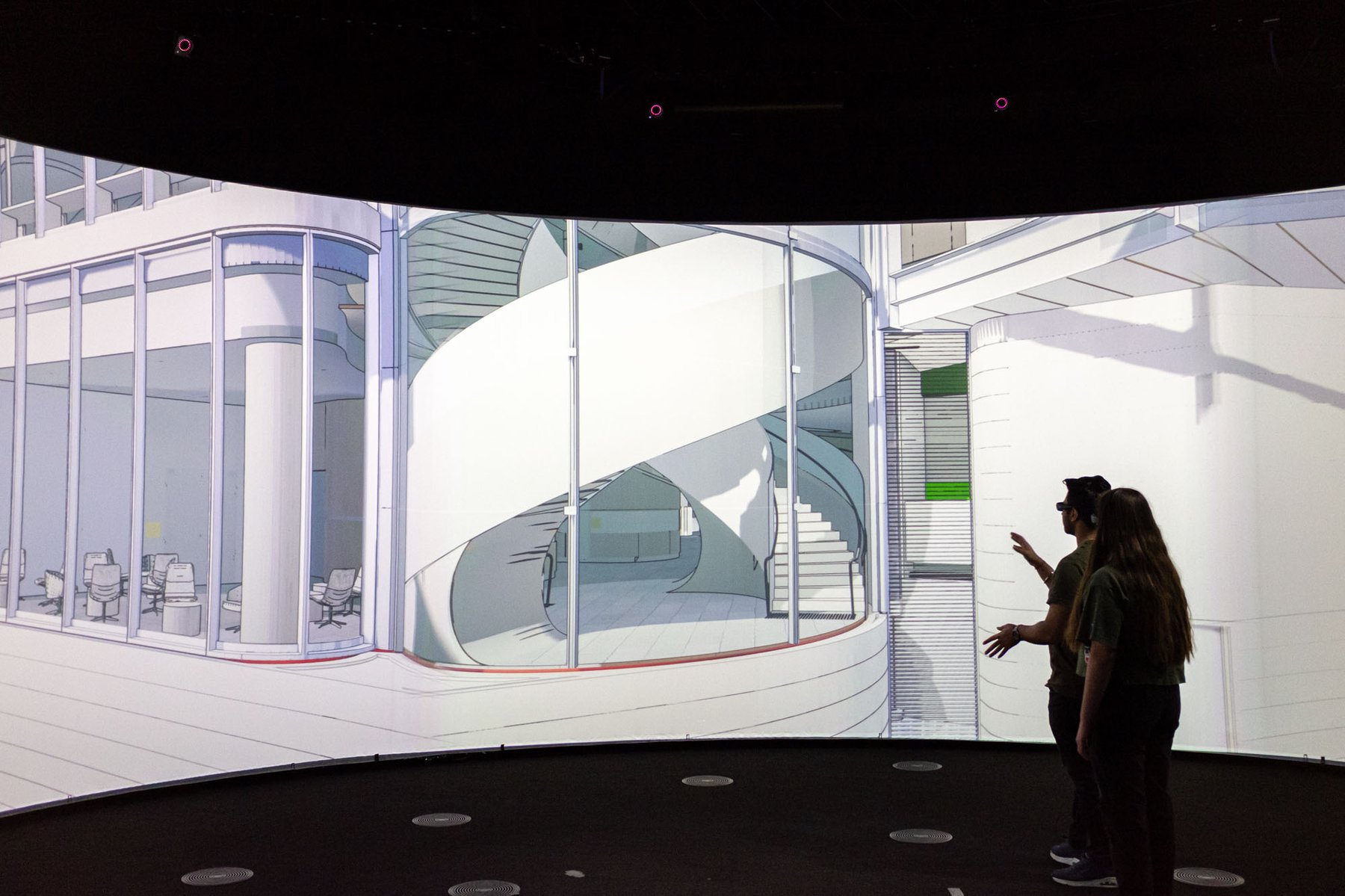| Year | 2023 |
| Credits | Darren LeeVisualisation Software Developer Ben SimonsVisualisation Technical Direction Richard Crooke ConstructionsBuilding Construction UTS Project Management OfficeProject Management fjcstudio (formerly fjmtstudio)Architecture Lacoste + StevensonArchitecture Daryl Jackson Robin DykeArchitecture |
| Links | |
| 3D Stereo | Yes |
| Tags | architecture archivis interactive model unreal engine visualisation |
UTS Central
This project leverages work from our original visualisation of this model using Omegalib. Using the same Building Information Model (BIM), we began to explore how we could bring this into Unreal Engine to utilise the engine’s high performance rendering and interactive affordances. This project was one of our first architectural visualisation demos to use UE as we started exploring a potential pipeline for further representations.
We had this model nearly 2 years before construction began. We'd meet with the Architects and the Builders to discuss the project, ahead of time.
Staircase Modification
The builders wanted to show the double helix staircase had a problem. You could hit your head. The architects disagreed: as you go down one stair case, the other goes down at the same rate, always a good distance above the head. It's fine. There was a disagreement.
We met in the Data Arena. The architects were ready to demonstrate the headroom. The builders said No, the issue was at the ground-floor. We moved the model view to the ground floor. Indeed, there was a problem! We could all see it, years ahead of construction. Someone could bump their head when stepping of the last step. They're no longer "going down". We can show this in the Data Arena today.


The architects pondered some solutions, then designed a curved part at the base which prevents a collision. This staircase modification is there today, in actual reality. It was collaboratively designed in the Data Arena.
BIM & Digital Twins
Most new building models are BIM, like this one. The opportunity to walk-through a building model with the construction teams & stakeholders is incredibly valuable. These models can become Digital Twins. Then the model is useful through-out the life of the building. Maintenance, repairs, renovations, energy estimates, resource use, plant performance, heating, exhaust, plumbing, electrical, ducting, fire, space, glazing, air conditioning, cleaning, H&S and training can all be conducted in this collaborative immersive space.
Why Unreal Engine?
Unreal Engine is a real-time rendering engine, traditionally used for developing video games. We’ve used its lighting model to introduce scene-wide sunlight and shadowing simulation over UTS Central and surrounding buildings. We can gain genuine insight into how time-of-day and seasonal changes can affect the illumination and atmosphere of internal and external spaces around the area. We can take advantage of this to explore how light can fill the building’s popular Winter Garden spaces, for example.
Post-processing effects inside Unreal Engine allow for aesthetic modifications to the entire rendered image in real-time, such out outline shading to communicate a sense of work-in-progress design. UE’s built-in physics engine could also allow us to build on the interactivity designed in our Cozy Living Room project to modify the model, re-positioning furniture and even walls and materials throughout the building.
Interaction and layer control
BIM models can contain a large amount of geometric data, hierarchically organised into a scene graph. To explore this, we build a custom web app to remotely toggle layer visibility. Users can hide all furniture, internal walls, floors, the building frame etc and reveal the underlying services of UTS Central: all plumbing, networking, electrical, fire safety and more.
What’s next?
We’ve already leveraged our discoveries from importing BIM data into Unreal Engine for other architectural visualisation projects. A common pain-point for these massive models is performance. The Data Arena is built around a cluster of high performance machines, but we still hit limits. Optimisations such as LODs (level of detail) on geometry and mesh instancing help and we are continuing to explore these. We’re looking forward to moving onto Unreal Engine 5 and utilising its features like Nanite for further performance gains when navigating through these heavy environments.